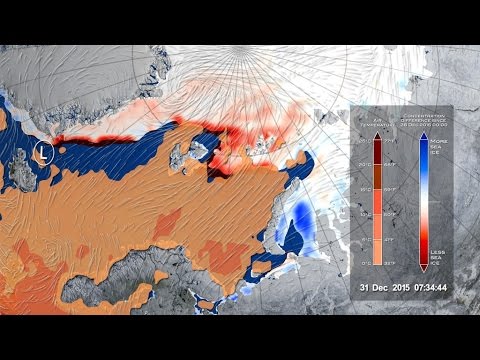Arctic sea ice grows during the winter months, reaching its largest extent sometime in March. When something disrupts the cold, dry, winter Arctic atmosphere, sea ice can feel the effects, and these impacts may linger through the season. At the end of December 2015, a low pressure system formed in the north Atlantic and swept into the central Arctic, disrupting sea ice formation. As a result of this weather event, the concentration of sea ice in this region decreased by around ten percent. Sea ice extent stayed low throughout the month of January and large parts of the region remained unseasonably ice-free, which probably helped contribute to a record low Arctic sea ice maximum.
This visualization starts with a global view of the Western Hemisphere. The viewer then moves in over the Arctic on Dec. 27, 2015. Winds and air temperature fade in as time moves forward. A low pressure system then moves in pushing warm air ahead of it. The warm air moves over the Arctic sea ice, contributing to dramatic melting of the sea ice concentration in this region.
Read more:
Credit: NASA Goddard’s Scientific Visualization Studio/Alex Kekesi, data visualizer
This video is public domain and may be downloaded at:

